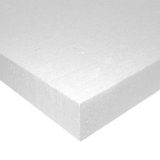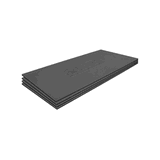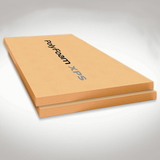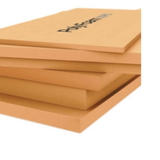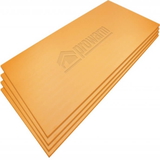- Blogs
- Quick and Easy DIY Tips: How to Cut Polystyrene Insulation the Best Way.
Quick and Easy DIY Tips: How to Cut Polystyrene Insulation the Best Way.

This article aims to provide a comprehensive guide on the effective and efficient cutting of polystyrene insulation.
Various methods for cutting polystyrene, including the use of a hand saw hot wire cutter, long-blade utility knife, and jigsaw, are discussed.
The advantages and precautions of each method are highlighted, along with the necessary tools for cutting round and square holes in polystyrene.
Additionally, the consequences of cutting polystyrene too big or too short are addressed, emphasizing the need for proper finishing techniques.
By following these guidelines, readers will be equipped with the knowledge and skills to successfully cut polystyrene insulation.
Tools for Cutting Polystyrene Insulation
Various tools, such as hand saws, hot wire cutters, long blade utility knives, and jigsaws, can be used for cutting polystyrene insulation.
When cutting polystyrene with a hot knife, it is important to take safety precautions. The hot wire cutter is the quickest and neatest method for cutting polystyrene. However, caution must be exercised as the wires can cause burns.
It is crucial to choose the right cutting tool for polystyrene to ensure clean cuts. Common mistakes when cutting polystyrene include using dull blades, applying excessive force, and not following proper cutting techniques.
To achieve clean cuts on polystyrene, it is recommended to use fine-toothed saws for precision cutting and sharp knives for creating straight cutting lines. Additionally, using small, steady movements and cutting on a firm surface can help prevent cracking.
Polystyrene Insulation Boards
Cutting Polystyrene With a Hand Saw
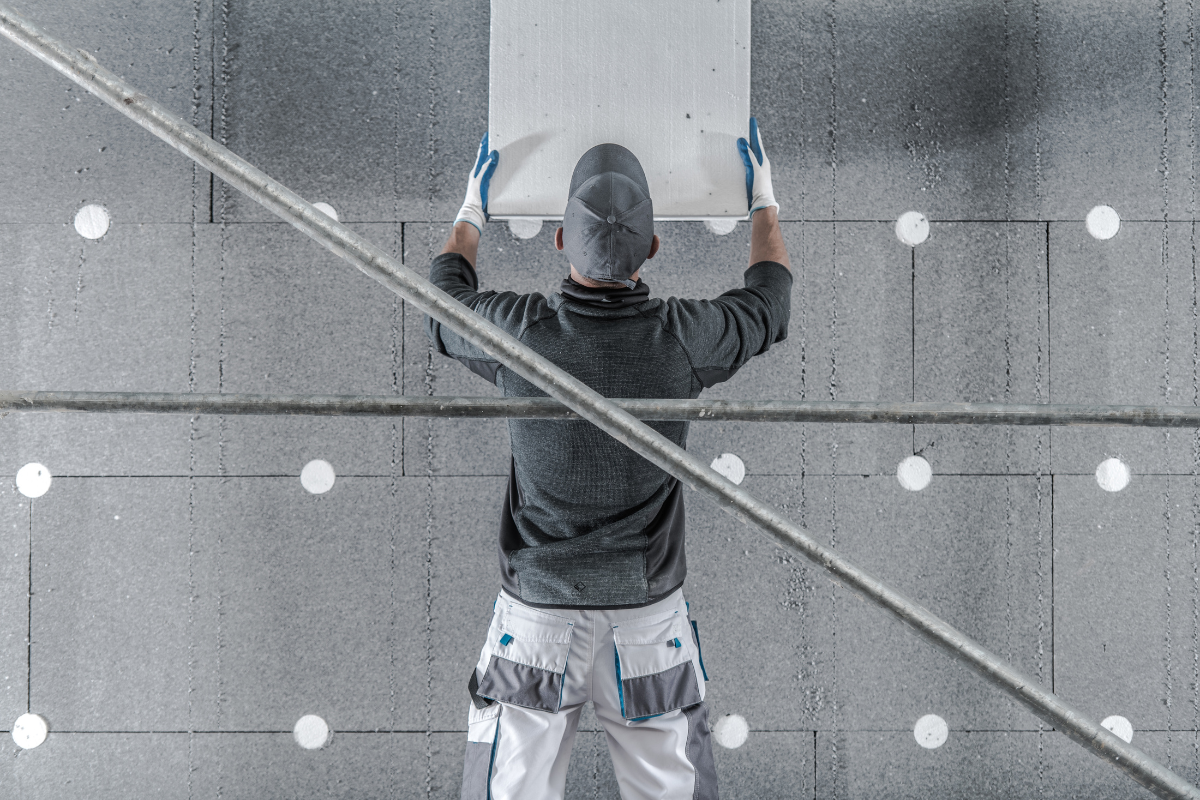 Hand saws are commonly utilized for precision cutting of polystyrene due to their effectiveness, affordability, and ability to provide good grip and control. When cutting polystyrene with a hand saw, it is important to follow certain cutting techniques and safety precautions to achieve precision cuts and prevent cracking.
Hand saws are commonly utilized for precision cutting of polystyrene due to their effectiveness, affordability, and ability to provide good grip and control. When cutting polystyrene with a hand saw, it is important to follow certain cutting techniques and safety precautions to achieve precision cuts and prevent cracking.
Firstly, it is recommended to use a fine-toothed saw for precision cutting as they work best on polystyrene. The cutting process is smooth as polystyrene generates no resistance. It is advisable to perform sawing on a firm surface to prevent cracking.
Additionally, selecting the best hand saws in terms of quality and durability is crucial to ensure efficient cutting. The hand saw should have sharp teeth and a comfortable handle for a good grip and control. It is also essential to maintain the saw's sharpness by regularly sharpening or replacing the blade.
Lastly, wearing safety goggles and gloves is important to protect oneself from any potential injuries while using a hand saw. By following these cutting techniques and safety precautions, individuals can achieve precise cuts and prevent cracking when cutting polystyrene with a hand saw.
Using a Hot Wire Cutter for Polystyrene Insulation
When using a hot wire cutter, the insulation material is melted by the heat generated from the wires to achieve a precise and clean cut. However, it is important to follow safety precautions when using a hot wire cutter for polystyrene insulation.
First, ensure that the workspace is well-ventilated to prevent the inhalation of fumes. It is also crucial to wear appropriate personal protective equipment, such as safety goggles and heat-resistant gloves, to protect against potential burns.
Best practices include keeping the hot wire cutter away from flammable materials and ensuring that the wires are properly heated before making cuts. Additionally, regular maintenance of the hot wire cutter is necessary to ensure its optimal performance. This includes cleaning the wires after each use and checking for any signs of wear or damage.
Alternative cutting methods for polystyrene insulation include using a hand saw, long blade utility knife, or jigsaw. Common mistakes when using a hot wire cutter include not allowing the wires to heat up adequately before cutting, applying excessive pressure while cutting, and not following proper safety protocols.
Buy Polystyrene Insulation Boards
Cutting Polystyrene With a Long Blade Utility Knife

The long blade utility knife is most suitable for cutting small, thin pieces of polystyrene with precision and accuracy. When it comes to cutting techniques for polystyrene, selecting the right knife is crucial in achieving precise cuts.
The long blade utility knife offers a sharp edge that allows for a straight cutting line. It is important to note that this type of knife is not recommended for pieces with a thickness of more than 30mm.
To ensure safety while using the long-blade utility knife, it is essential to take proper safety precautions, such as wearing protective gloves and using a cutting mat or board to prevent injuries and damage to surfaces.
Additionally, alternative cutting methods, such as using hand saws, hot wire cutters, or jigsaws, offer different advantages and may be more suitable for cutting larger or thicker pieces of polystyrene.
However, for precise and accurate cuts on small, thin pieces of polystyrene, the long blade utility knife remains the most suitable option.
Cutting Styrofoam with a Jigsaw
A jigsaw offers ease of operation and speed, but it may not deliver clean results and requires an electrical power source. When cutting Styrofoam with a jigsaw, it is important to take safety precautions.
- Wear a dust mask and safety goggles to protect yourself from the small particles that may be generated during the cutting process.
- Transform measurements and set a guide line to ensure a straight cut.
- It is recommended to cut at a low speed, especially for thicker polystyrene, as this will prevent the material from melting or deforming.
- Longer blades are needed for thicker polystyrene to ensure a smooth and efficient cutting process.
However, it is important to note that the advantages of using a jigsaw include easy operation and speed, but it may not give clean results and requires electricity. Therefore, it is important to consider alternative cutting methods such as using a hot wire cutter, hand saw, or long blade utility knife depending on the specific needs of the project.
Additionally, when cutting Styrofoam with a jigsaw, it is essential to pay attention to finishing the edges. The edges may not look smooth after cutting with a jigsaw, and in such cases, a rasp or grinder can be used to shape and smooth the EPS boards. However, it is important to be cautious when using a rasp as it produces a large amount of electrifying polystyrene pieces.
Each cut of polystyrene creates a mess and extends installation time, so it is crucial to cut carefully.
Cutting Rigid Foam Insulation: Best Tools and Techniques
When tackling a DIY insulation project, knowing the best way to cut rigid foam insulation can make a significant difference in the outcome. Rigid foam, also known as foam board, is a popular choice for insulating homes due to its high insulating properties. However, achieving clean and precise cuts in rigid foam insulation requires the right tools and techniques.
One of the best tools for cutting rigid foam insulation is a table saw or circular saw equipped with a fine-toothed saw blade. These tools provide a controlled and accurate cutting experience, especially when working with larger pieces of insulation board. Additionally, using a straight edge as a guide can help you achieve a clean and straight cut along the marked line.
To make straight and clean cuts, it's important to select the right blade for the saw. A blade with fine teeth reduces the chances of creating foam dust and ensures a cleaner cut. When using a table saw or circular saw, maintaining a steady and gentle feed rate can prevent the foam from melting due to friction and result in a cleaner cut.
If you're dealing with smaller pieces or need to cut around obstacles, a jigsaw can be an effective tool. The jigsaw's versatility allows you to maneuver around corners and create precise cuts, making it suitable for more intricate projects. However, it's crucial to secure the foam board using clamps or other methods to prevent movement during the cutting process.
For those who prefer a hands-on approach, a long blade utility knife can be used to score and cut the foam. Scoring involves creating a shallow groove along the cut line before making a deeper cut. This neatest way to cut polystyrene is especially useful for achieving precise cuts and minimizing the risk of uneven edges.
Using a hot wire cutter is another efficient method for cutting rigid foam insulation. The hot wire melts through the foam, creating a smooth and clean edge. However, this method is often used in well-ventilated spaces due to the fumes produced during the process. Safety precautions, including wearing protective gear like safety goggles and using a respirator, are essential.
When cutting foam insulation, always cut slightly oversized and then trim for a tight fit. This prevents the foam from being too short, as cutting it too small can lead to gaps and reduced insulation effectiveness. Always follow manufacturer guidelines for the specific foam insulation being used.
In summary, whether you're insulating your home or working on a DIY project, the way to cut foam insulation effectively involves choosing the right tool for the job. From table saws and circular saws to jigsaws and hot wire cutters, each tool has its advantages depending on the project's requirements. By following proper techniques, you can achieve clean, precise, and efficient cuts in rigid foam insulation, leading to a successful insulation insulation.
Buy Polystyrene Insulation Boards
Achieving Precise Cuts in Rigid Foam Insulation
When it comes to working with insulation foam, especially XPS (extruded polystyrene), achieving clean and accurate cuts is essential for an effective insulation installation. Whether you're aiming to cut rigid insulation to fit into wall cavities or other spaces, understanding the techniques for polystyrene cutting can make the process much smoother.
One tool that's commonly used for cutting rigid foam is a hot wire cutter with a nichrome wire. This method generates minimal mess and provides a perfect cut, leaving smooth edges. However, it's important to use a hot wire cutter in a well-ventilated space, as the fumes produced during the cutting process can be harmful. You'll also need to gently move the wire along the marked line to achieve clean and accurate cuts.
For those who prefer a more hands-on approach, using a craft knife can yield precise results. By scoring the foam along the intended cut line and then making a deeper cut, you can achieve clean and accurate cuts. This method is particularly useful for cutting foam insulation cleanly along the edge, creating a neat finish.
If you're working on larger pieces of rigid foam, a circular saw or jigsaw can be employed. These tools work well when cutting foam insulation to a specific width, and they are commonly used in carpentry and construction projects. To ensure a clean cut, using the appropriate type of blade cutter is crucial. Always remember to follow safety precautions and manufacturer guidelines.
Before attempting any cuts, it's a good idea to watch tutorials on platforms like YouTube. Many DIY enthusiasts and experts have shared their experiences on their YouTube channels, offering valuable insights and tips. Reading the description of these videos can provide additional guidance, making your insulation project smoother and more efficient.
In summary, cutting rigid foam insulation requires attention to detail and the right tools. Whether you're using a hot wire cutter, a craft knife, or power tools like circular saws and jigsaws, following proper techniques ensures the cleanest and most accurate cuts. Always remember to work in well-ventilated spaces when using certain methods, such as hot wire cutters. By choosing the right tools and techniques, you can achieve professional-grade results, leaving your insulation installation looking seamless and effective.
Please note that this information is intended as a general guide. Always refer to specific instructions provided by manufacturers and professionals, especially when working with materials like XPS and polystyrene.
Frequently Asked Questions
Q: Can I Use a Regular Saw Instead of a Hand Saw to Cut Polystyrene Insulation?
A: A regular saw can be used instead of a hand saw to cut polystyrene insulation. However, the hand saw is more popular and effective due to its fine-toothed blades and low cost. Safety precautions should be taken when using any cutting tool. The adjustable hot wire cutter and long blade utility knife are also viable options.
Q: How Do I Know if My Hot Wire Cutter Is Adjustable?
A: The adjustability of a hot wire cutter can be determined by reviewing the features provided by different brands. Troubleshooting and maintenance guidelines provided by manufacturers can also offer insights into the adjustability of a hot wire cutter.
Q: Are There Any Safety Precautions I Should Take When Using a Long Blade Utility Knife to Cut Polystyrene Insulation?
A: Safety measures should be taken when using a long blade utility knife to cut polystyrene insulation. Proper cutting technique, handling the blade carefully, and wearing protective gear such as gloves and safety goggles are important for avoiding accidents.
Q: What Type of Blade Should I Use on a Jigsaw to Cut Styrofoam?
A: When cutting styrofoam with a jigsaw, it is important to select the appropriate blade for clean cuts. Using a fine-toothed blade designed for cutting soft materials, such as polystyrene, can help achieve precise and smooth results.
Q: Can I Use a Hole Saw to Cut Square Holes in Polystyrene Insulation?
A: Using a hole saw to cut square holes in polystyrene insulation is not recommended. Alternative cutting methods, such as using a pad saw or a jigsaw, are more suitable for achieving clean and precise cuts in polystyrene insulation.
Q: What is foam insulation and why is it used?
A: Foam insulation is a type of insulation material that is made from polystyrene or polyurethane. It is used to provide thermal insulation in buildings and other structures to reduce energy consumption and improve comfort.
Q: What is the easiest way to cut foam insulation boards?
A: The easiest way to cut foam insulation boards is by using a sharp utility knife or a handheld foam cutter. These tools are designed to make clean and precise cuts in the foam insulation.
Q: Can rigid foam insulation be cut?
A: Yes, rigid foam insulation can be cut using various tools such as a utility knife, a handsaw, or a power saw. The choice of tool depends on the thickness and type of foam insulation.
Q: How do I make a straight cut in foam insulation?
A: To make a straight cut in foam insulation, you can use a straightedge or a piece of wood as a guide for your cutting tool. This will help you achieve a clean and precise cut along the desired line.
Q: What tools can be used to cut foam insulation?
A: Some of the common tools used to cut foam insulation include utility knives, hot wire foam cutters, saws (such as keyhole saws or handsaws), and foam cutting blades for power saws. The choice of tool depends on the thickness and type of foam insulation.
Q: How do I cut polystyrene foam insulation without making a mess?
A: To cut polystyrene foam insulation without making a mess, you can use a putty knife or a handsaw with fine teeth. These tools will help create clean and precise cuts, minimizing the amount of foam debris.
Q: Can I use a hot wire foam cutter to cut foam insulation?
A: Yes, a hot wire foam cutter can be used to cut foam insulation. This tool uses a heated wire to melt through the foam, creating a clean and precise cut. However, caution should be taken when using this tool as it can produce toxic fumes, so it should be used in well-ventilated spaces.
Q: What is the best way to cut foam insulation to achieve a clean straight edge?
A: The best way to cut foam insulation to achieve a clean straight edge is by using a sharp utility knife or a foam cutting blade for a power saw. Make sure to apply even pressure and cut along a straightedge or a guiding line to maintain a clean and straight cut.
Q: Do I need any special tools to cut foam insulation?
A: While there are specialized foam cutting tools available, you can achieve satisfactory results with common tools such as a utility knife or a handsaw. However, using the right tool for the job can make the cutting process easier and more efficient.
Q: Is there a video tutorial available on cutting foam insulation?
A: Yes, there are numerous video tutorials available on platforms like YouTube that provide step-by-step instructions on cutting foam insulation. These tutorials often include helpful tips and tricks to ensure a successful cutting process.

Samuel Hitch
Managing Director
Buy Insulation Online.
Leave A Reply
Your feedback is greatly appreciated, please comment on our content below. Your email address will not be published. Required fields are marked *



